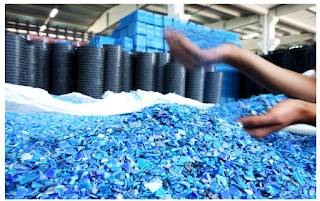A variety of plastics are used for thermoforming, however, in this article, we are focusing on six types of plastic that lead the way for thermoforming.
ABS
ABS is a common thermoformed plastic that is made of acrylonitrile, butadiene, and styrene. It can withstand extreme temperatures ranging from -4 to 176 °F. This ensures that the plastic can be molded to any desired shape at high temperatures. ABS is corrosion-resistant and impact-proof. Polycaprolactone is a transparent, heat-resistant material that's used in a variety of applications, including sports equipment and protective headgear.
HIPS
HIPS is a versatile plastic that can be used to make many different products, including food packaging. It's clarity makes it an ideal choice for protective apparel and other items needing protection from heat or chemicals like detergents in washrooms; HI&I has high impact resistance which means the material will withstand some wear without breaking down easily - this also helps with shaping objects when heated using thermoformed machines. It can be molded to different shapes multiple times and it can still preserve its properties.
HDPE
HDPE is a petroleum-based thermoplastic polymer that has an excellent strength to density ratio. It's used in numerous applications such as bottles, plastic packaging 3D printing, and bag production for many items like groceries or clotheslines because it can withstand high temperatures without breaking down. HDPE also performs well when producing products requiring durability along with being UV resistant which means they will last longer than other materials of similar weights despite containing less material per unit volume due to its higher melting point - all qualities desired by consumers looking at their made items.
PVC
PVC or polyvinyl chloride is a tough and durable plastic commonly used in the manufacture of pipes. It's created with suspension polymerization which makes it an ideal material for withstanding impacts from extreme temperatures as well as other harsh conditions such as moisture exposure that would otherwise cause failure on most materials over time, due to corrosion. Before, this process can be applied effectively by using chemicals called antioxidants during production processes creating products made right here at home.
PET
Polyethylene terephthalate (PET) is a common plastic used for thermoforming. It can be heated and then shaped into any form needed, but it's most often seen as the bottle or fiber you find at home sitting on your kitchen shelves! During this process of molding PET with differentials in temperature along its length to create desired properties such as extreme resistance against corrosion from weather elements like rainwater; we also make sure that there are no air bubbles inside our product which would cause imperfections when removed later after cooling down completely--this way they stay looking good forever without ever getting worse due to exposure to outside conditions.
PETG
Polyethylene terephthalate glycol or PET-G is a thermoplastic polyester that can be readily molded. It's recognized for its durability, resistance to chemicals, and ease of production. Furthermore, because it contains no non-PVC additives, there are no odor issues when used as a food-contact substance. This allows it to be easily vacuumed and pressure-formed to create end-products of various shapes. It is also ideal for fabrication methods such as routing, bending, and cutting.







